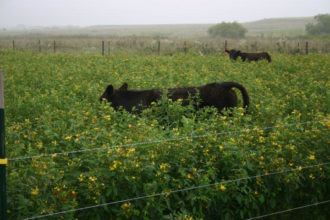MISSISSIPPI STATE, Mississippi -- Livestock producers in the Southeast are getting the educational resources and training they need to meet the consumer demand for grass-fed beef.
In states like Mississippi and Alabama, where production and marketing materials, field events, enterprise budgets, and training programs in forage-finished beef are lacking, researchers at Mississippi State University, Auburn University and Tuskegee University are stepping up to make sure producers are positioned to tap into the growing industry.
In a SSARE-funded train-the-trainer effort, Cooperative Extension agents are being equipped with tools that allow beef producers to improve the profitability and sustainability of their farms while improving environmental stewardship and management practices.
Such tools include educational resources on forage management, animal genetics, and value-added marketing; budgeting programs; field days and conferences; and a training manual covering five course modules: forage, cattle, harvest and meat quality, food safety and legal, and economics and marketing.
The hope is that standards of grass-fed beef production and marketing can be developed that will allow producers to produce a high quality, consistent product using educational information from a trusted, reliable source.
Published by the Southern Region of the Sustainable Agriculture Research and Education (SARE) program. Funded by the USDA National Institute of Food and Agriculture (NIFA), Southern SARE operates under cooperative agreements with the University of Georgia, Fort Valley State University, and the Kerr Center for Sustainable Agriculture to offer competitive grants to advance sustainable agriculture in America's Southern region. This material is based upon work that is supported by the National Institute of Food and Agriculture, U.S. Department of Agriculture, through Southern Sustainable Agriculture Research and Education, under sub-award number: ES16-126. USDA is an equal opportunity employer and service provider. Any opinions, findings, conclusions, or recommendations expressed in this publication are those of the author(s) and do not necessarily reflect the view of the U.S. Department of Agriculture.
